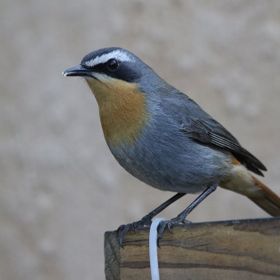
Views
480
Likes
Awards
People's Choice in Good, bad and ugly Photo Challenge
Peer Award
Absolute Masterpiece
Magnificent Capture
Top Choice
All Star
Outstanding Creativity
Superior Skill
Superb Composition
Top Ranks
Categories
Same photographer See allBehind The Lens
Discover more photos See all
Behind The Lens
Location
This photo was taken at the Rietvlei Nature Reserve (RNR), South of Pretoria, South Africa. It is one of a few nature reserves on the outskirts of Pretoria, South Africa. The reserve consists of 3 800 ha of endangered Bankenveld grassland with open plains and undulating hills, which is home to rhino's, cheetahs, buffalo and other wildlife. On a guided night drive one may even be lucky enough to spot one or more elusive nocturnal animals, such as brown hyena, black-backed jackal, ant-bear, aardwolf, porcupine, springhare and bush pig. I was fortunate enough to photograph both a bush pig and black-backed jackal during the day.Time
I am a frequent visitor to RNR and try to be there when the gates open (05:30 in summer and 06:00 in winter) as this is normally the best time to capture the wildlife. However, 60 km (37 miles) of tarred road, with even more dirt roads, makes it a big area to cover. One morning, as I was working my way slowly towards the main exit, I spotted the mother cheetah, but she very quickly disappeared into the grass. My emotions changed from excitement at seeing her, to frustration at not being able to photograph her. I was about to drive off when I saw the three youngsters walking towards me. This image of two of the three was immortalised at 08:27 on 11 January 2018.Lighting
Early morning or late afternoon is normally the best time to photograph wildlife as they are at their most active during this "eating" time. However, wildlife and birds have their own time to appear from out of nowhere. Although lighting is an important factor, I have successfully captured reasonable to excellent images during midday in the harsh African summer sun. The lesson: Know your equipment, compensate for time of day and last but not least, be ready to fire away asap. That also goes while your are sitting in a bird hide.Equipment
My preferred weapons are the Canon EOS 7D Mark II to which I have attached a Sigma 150-600mm 1:5-6.3 DG model C of which the face is covered with a Hoya HMC UV (0) filter. The settings were: Aperture: f/5.6, Auto ISO: 640, Shutter Speed: 1/2000 and focal length: 244/1. In place of a beanbag I use a 20 cm piece of pool noodle on the window for support. Without my trusted Toyota Fortuner to take me to beautiful places this would not be possible.Inspiration
I love nature and capturing beautiful wildlife on camera. RNR is my favourite "hunting ground" as it is about 15 minutes drive from my house and always presents something beautiful to capture. Knowing the cheetah mother had cubs in 2017, I was on a continuous mission to find and photograph them. I desperately wanted some decent shots of them as they were high on my priority list. Frustration crept in when, after many visits over a period of one year, I spotted the cheetahs only 3 times but could not get a good shot. At last, though, my patients and persistence paid of and, in no small way, through the support, encouragement and assistance from my wife, Rouvé.Editing
I was born BC (before computers) and therefore not knowledgeable with the intricacies of post-processing. I can do a limited bit on PSE but primarily use Media Impression 2 to do cropping and straightening. Being self-taught and old school, I try my best to do it right in-camera so that I do not have to fix it afterwards. In this instance that was the recipe - straight out of the camera. No post-processing.In my camera bag
The very first piece is my Canon EOS 7D Mark II with a Sigma 150-600mm 1:5-6.3 DG model C attached to it. Always at least one fully charged extra battery and spare 32GB SD card. Then I sometimes take my Canon 70D with a Canon Zoom Lens EF 24-105mm L IS UM to photograph scenery and animals close to my vehicle.Feedback
To be successful I have three specific topics to address. Firstly, be fully conversant with your equipment. Know all its capabilities, limitations and purpose of all settings. Practise and then practise some more. Frequently check your battery status and how much space is still available on your card. Replace sooner rather than later as it is a frustration when you run out of space at a crucial moment and miss out on THAT image. Reformat your cards from time to time. "Reading/Writing error" is not a message you want to see when shooting or downloading your images. I moved to manual settings (with auto ISO) from the onset because it forces you to think and prepare - although I still need to always remember to check my settings from time to time. I have lost some, in my opinion, spectacular images because of this "forgetfulness". Secondly, know the behaviour of your subject and the environment. Remember the sun is moving all the time and continuously changes the shadows and harshness between say 09:00 to about 16:00 (SA time GMT +2). Be patient, be ready, respect them and above all be quiet. Never disturb animals or birds because you will not get THAT shot by hooting, shouting or making a lot of noise. Lastly, remember that every image will not be a masterpiece and also remember the original reason why you started photography and keep to it. Enjoy every click and enjoy the experience.














































